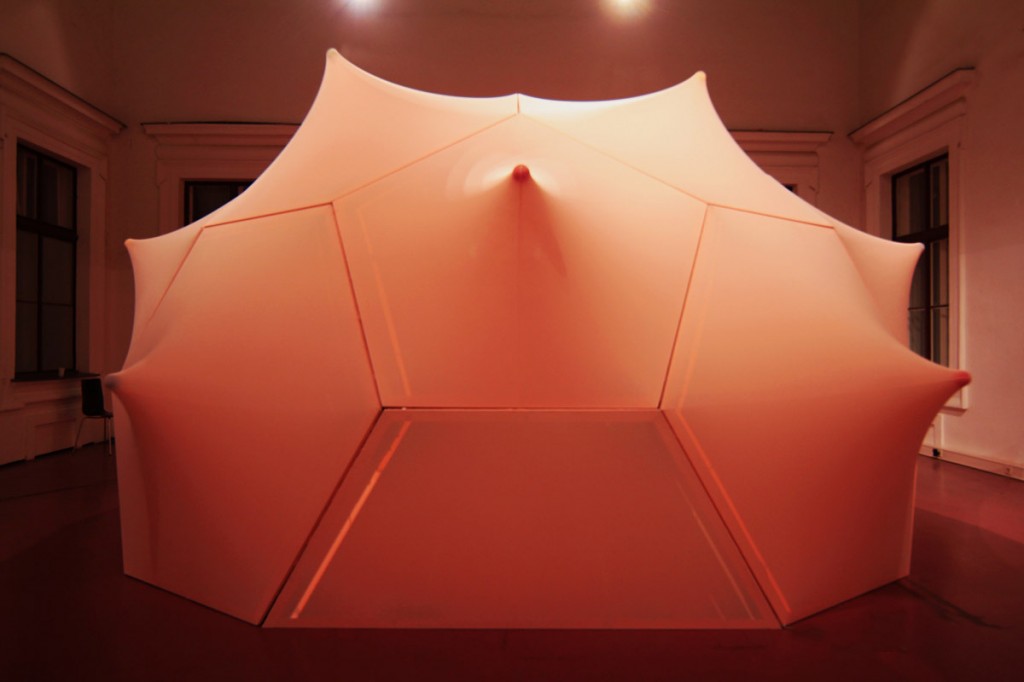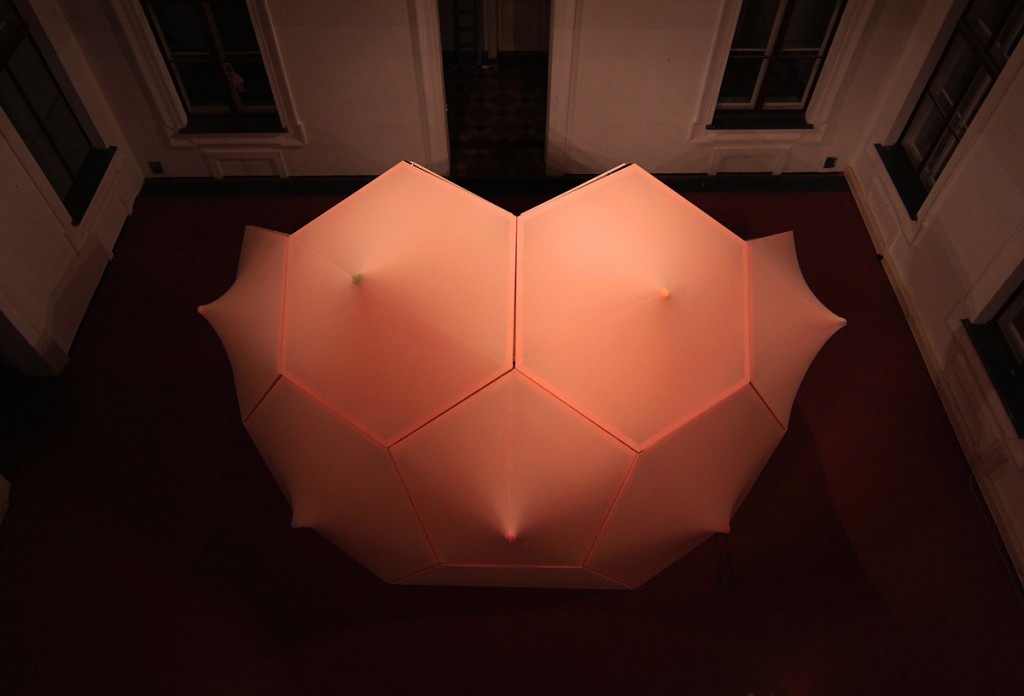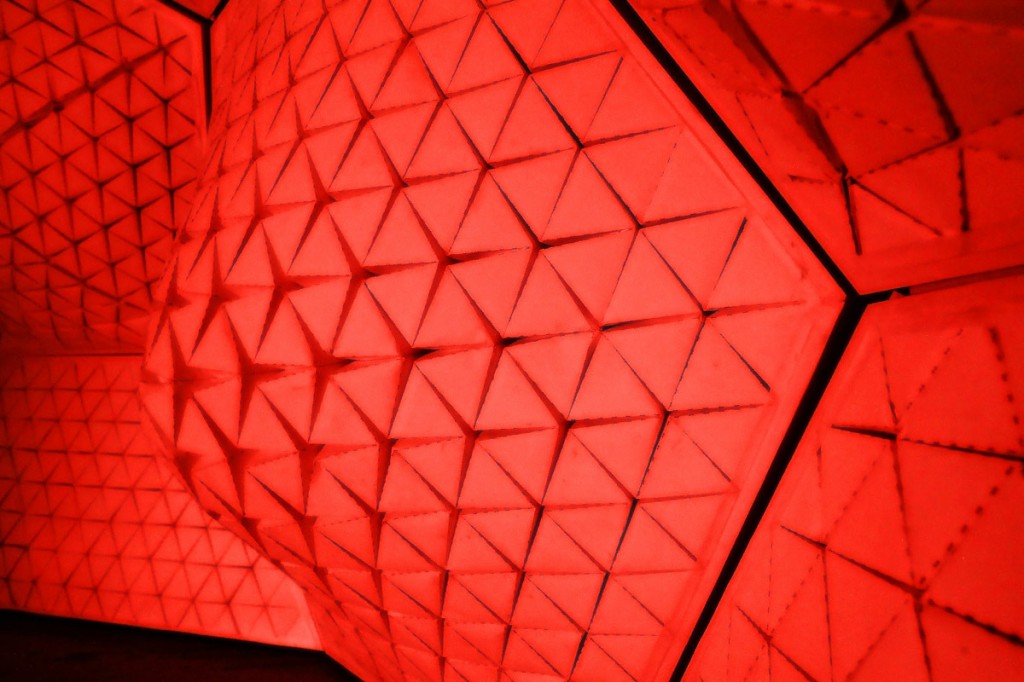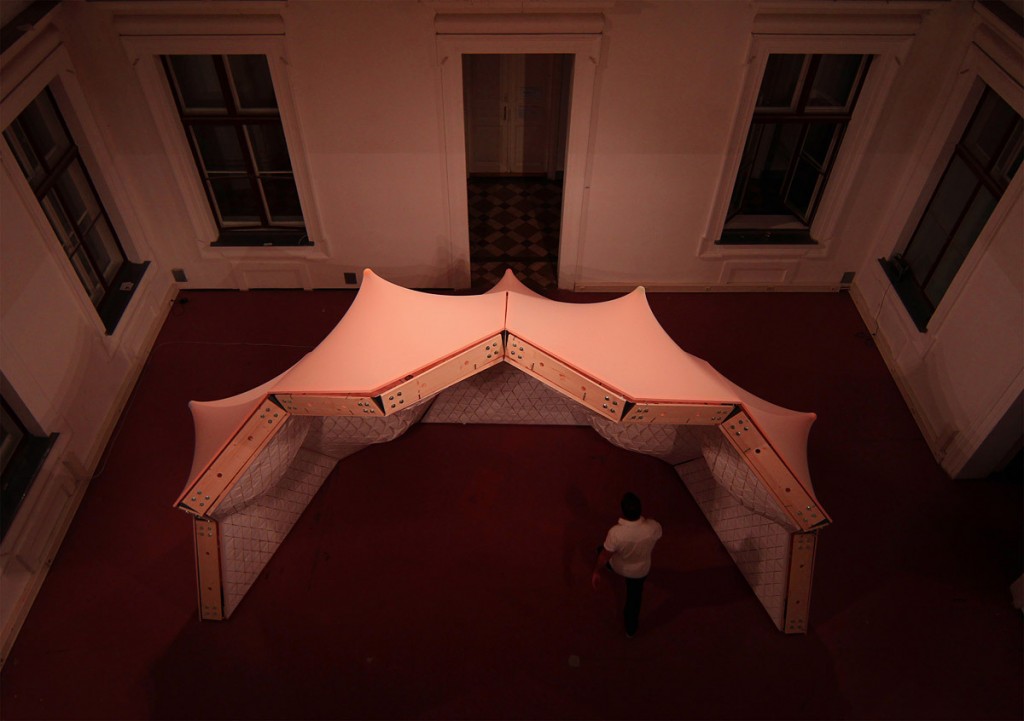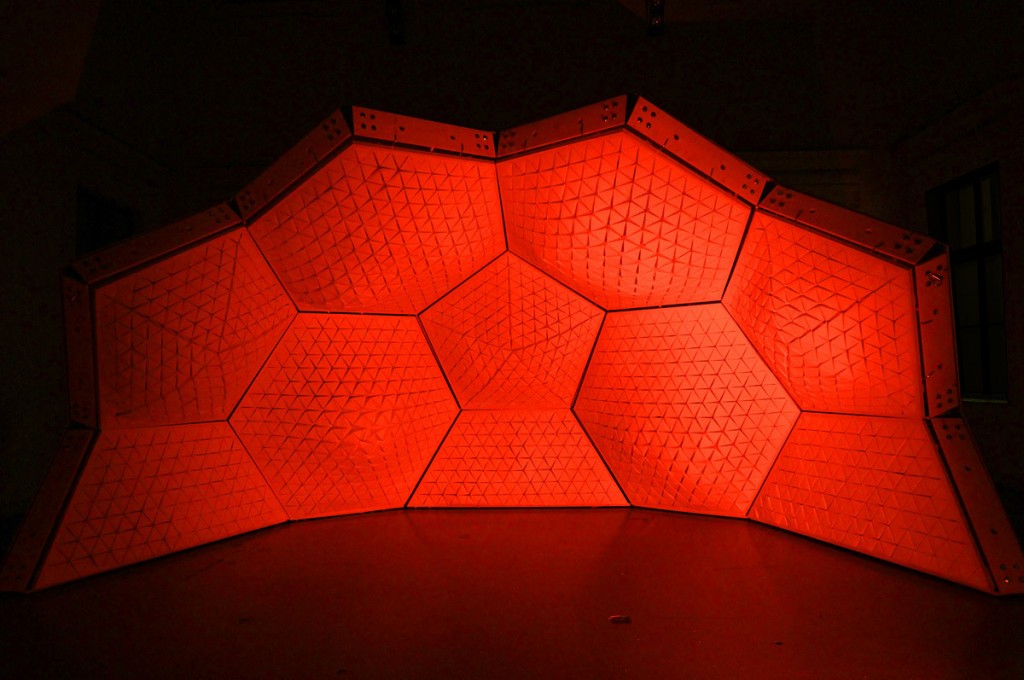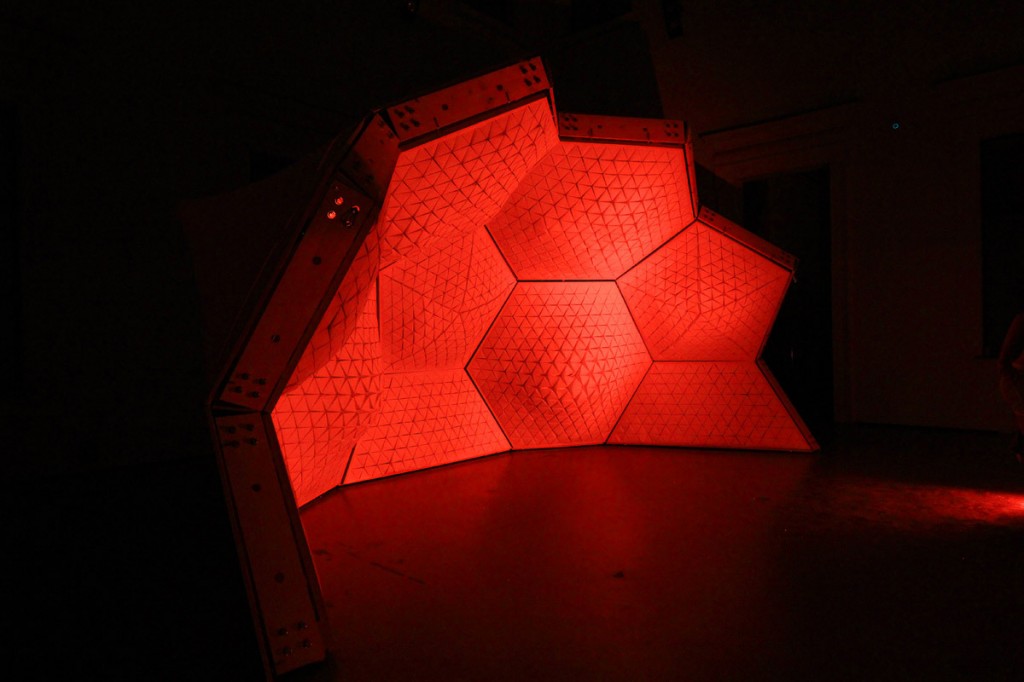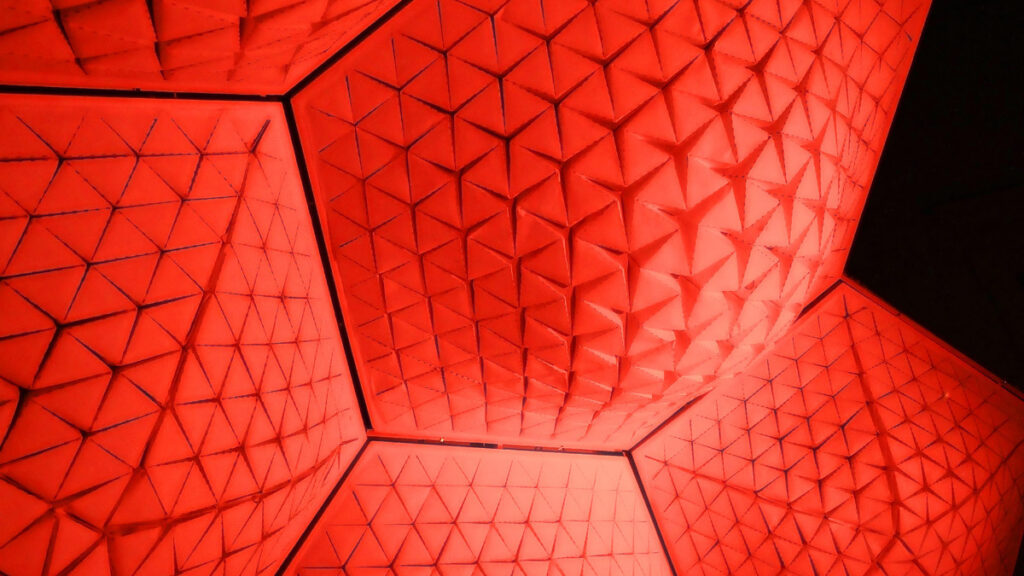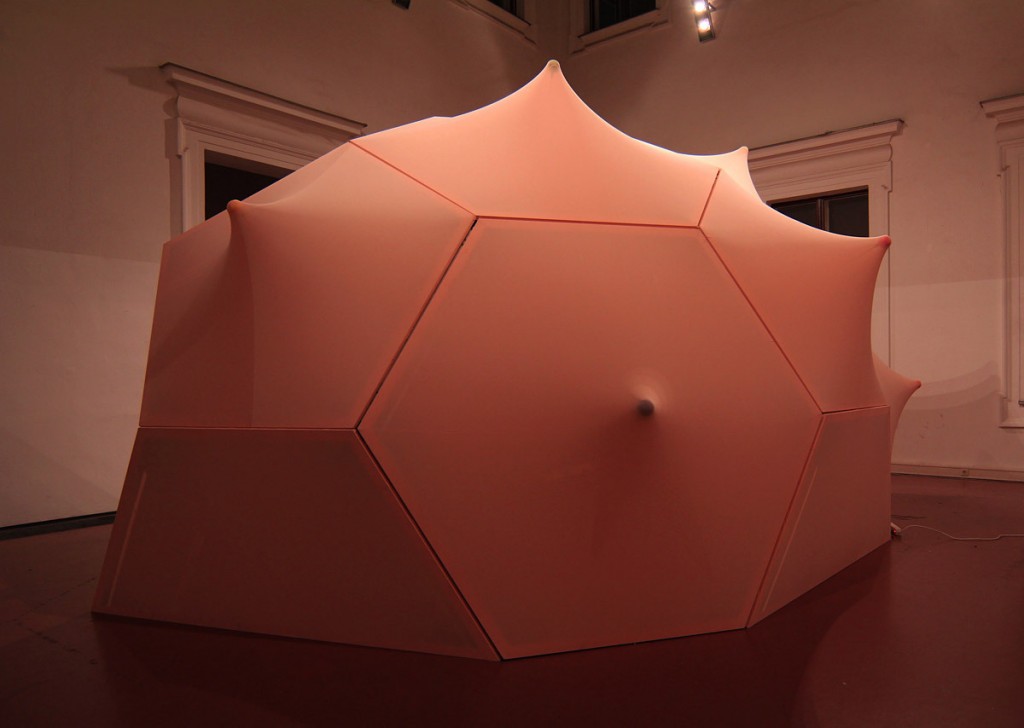Cerebral Hut
Cerebral Hut is a kinetic installation that works with an interface that measures brain frequencies and turns them into a reactive environment and explores the relationship between architecture, movement and human thought.
We traditionally assume that the built environment, whether in the architectural or the urban scale influences our psyche. What if we can reverse that relationship? What if a kinetic architecture could establish a direct connection between the thoughts of its user and itself in order to reconfigure its physical boundaries accordingly?
In order to create a space that is reactive to brain activity, the team hacked a commercially available device that can measure concentration levels and blinking, interpreted these data thresholds and wrote scripts that would translate them into motion. A research on different folding patterns and geometric structures lead to the creation of an environment that can act as a vessel for movement. As a result, Cerebral Hut became a game-space where the user controls the physical boundaries of his environment by his thoughts. As the user engages in activities that increases concentration levels, such as imagining movement, the environment responds real time and changes its configuration. Cerebral Hut plugs into a vein of contemporary research that explores kinetic environments and the relationship between technology, movement and space, but it is the first of its kind that creates a moving architecture that directly responds to human thought. And consequently it creates a collective architectural form, which questions the static notions of space and conclusive perceptions of design. The Cerebral Hut has no final, or ideal design-form, its interior and exterior is in constant transformation triggered by user participation.
Credits
Design, Research: Guvenc Ozel, Alexandr Karaivanov
Programming, Mechanical Design: Jona Hoier, Peter Innerhofer
Installation Team: Guvenc Ozel, Alexandr Karaivanov, Lena Krivanek, Peter Innerhofer
Administrative Support: Alexandra Graupner, Sabine Peternell
Special Thanks to: Greg Lynn, Gerald Bast, Klaus Bollinger, Esra Kahveci, Onur
Sönmez, Markus Murschitz
